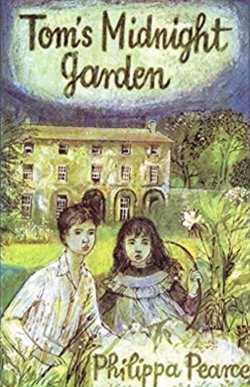Gareth B. Matthews

Review of Tom’s Midnight Garden by Philippa Pearce (New York: Dell, 1979). Originally published in Thinking: The Journal of Philosophy for Children 3(1): 3.
John Wisdom has helped us to see that sometimes philosophy is the enterprise of checking to see whether some attitude we have to this or that is ”well placed.” Thus a philosopher may ask whether an attitude towards the universe as something ensouled, or guarded, or created, is a well-placed attitude. Again, a philosopher may consider whether it might be appropriate to think of a person one hasn’t seen for many, many years as a descendent of the earlier person one knew so well.
Tom’s Midnight Garden concerns our attitudes towards time, mutability and people much older, or much younger, than we. It asks us to consider whether the attitudes we have are well placed.
In the story Tom is sent to stay with an uncle and aunt while his brother recovers from the measles. In exile Tom learns, accidentally, that he can escape the tedium of his surroundings by slipping out at midnight into a Victorian garden; in the garden he can enjoy playing with a little girl named “Hatty.”
The world of the midnight garden is peculiar in several ways. In it Tom is invisible to many people around him, though not, fortunately, to Hatty. Then there are peculiarities about the time of that world. From the perspective of our world things that take place in that world take no time at all. Moreover, Tom finds on successive visits to that world that, although sometimes Hatty is actually younger than she was on his previous visit, mostly she gets much older each time around. At the end of the story Tom meets Mrs. Bartholomew, the reclusive landlady who lives in the flat at the top of the house and discovers that she, in fact, is the Hatty with whom he has played each night of his stay.
At the structural base of this sensitive and engaging story lies an asteismus. The author has taken the cliché, ‘she lives in her past,’ and given it as nearly literal an interpretation as possible. The idea is that Mrs. Bartholomew spends much of her time, especially at night, and especially in her dreams, reliving her childhood. She does this in such a way that Tom is able to stumble on the world of Mrs. Bartholomew’s childhood and to play with her, in her past.
In part Tom’s Midnight Garden is an exploration of the ultimate reality of time. In part it is an effort to get us to look for the little girl in the old woman and the grown-up in the little girl. We tend to see ourselves and others as though we and they were essentially young, or essentially middle-aged, or essentially old – as if Grandma had gone through life as an 82-year-old. But suppose that we, like Tom, could visit Grandma’s childhood. What attitudes might we have to her then? We might come to think of the relations our life histories bear to those of others about us as accidents of birth; we might be encouraged to explore the possibilities of friendship and companionship across vast differences of age.
In the story’s final scene Tom and Mrs. Bartholomew say their goodbyes with stiff politeness. Tom descends the stairs slowly. Then, impulsively, he turns and bounds back up the stairs, two steps at a time. As his aunt later described the scene, “they hugged each other as if they had known each other for years and years, instead of only having met for the first time this morning.” She added: ”There was something else, too,… although I know you’II say it sounds even more absurd … Of course, Mrs. Bartholomew’s such a shrunken little old woman, she’s hardly bigger than Tom, anyway; but, you know, he put his arms right round her and he hugged her good-bye as if she were a little girl.”
